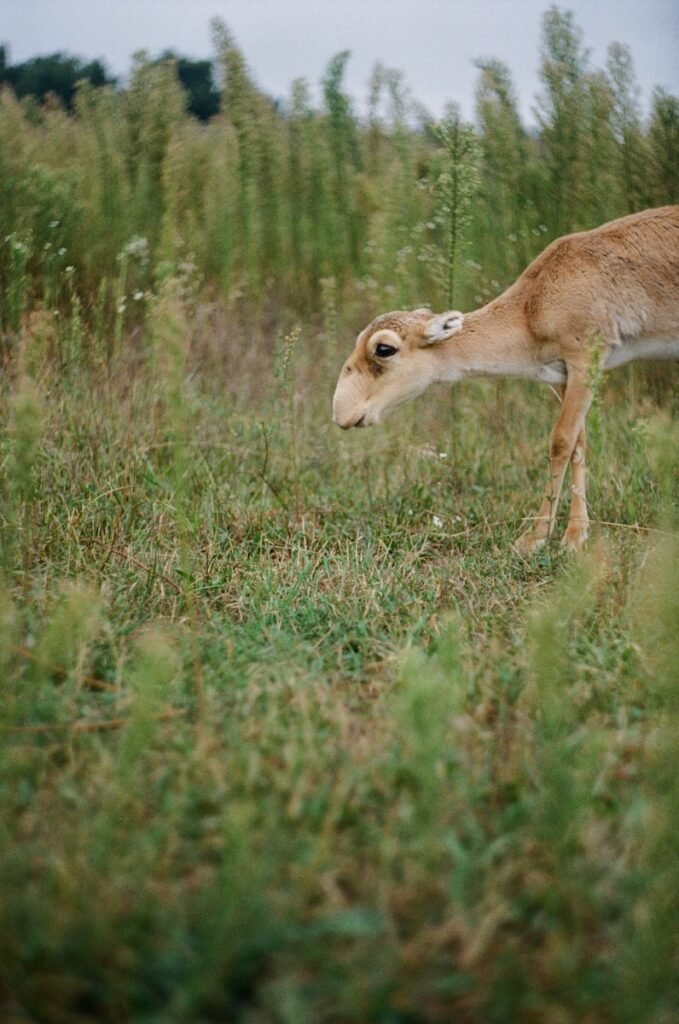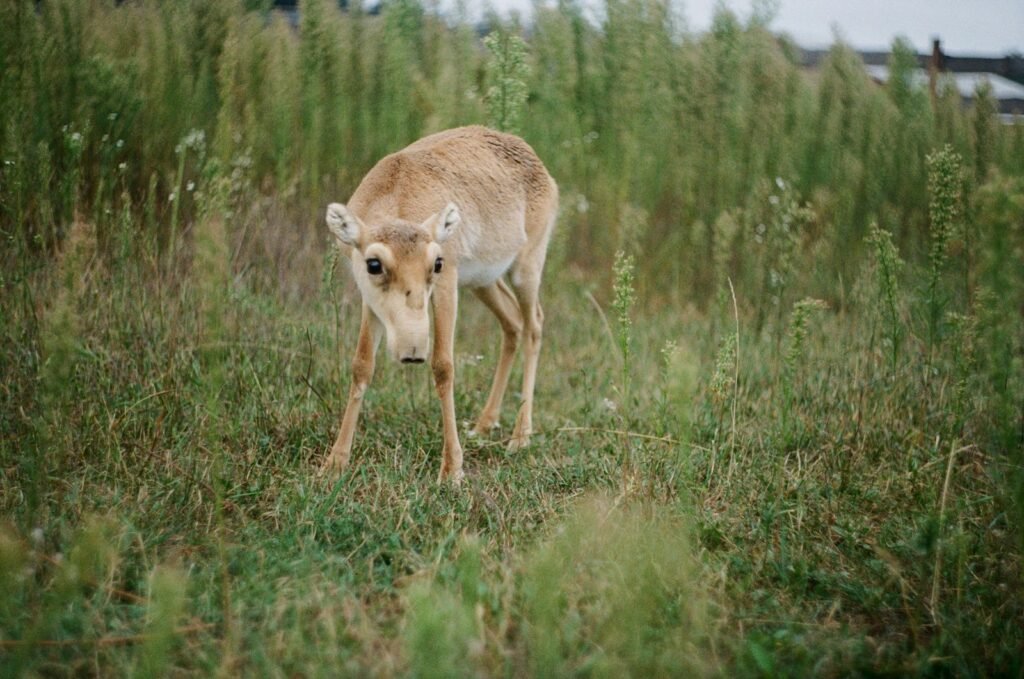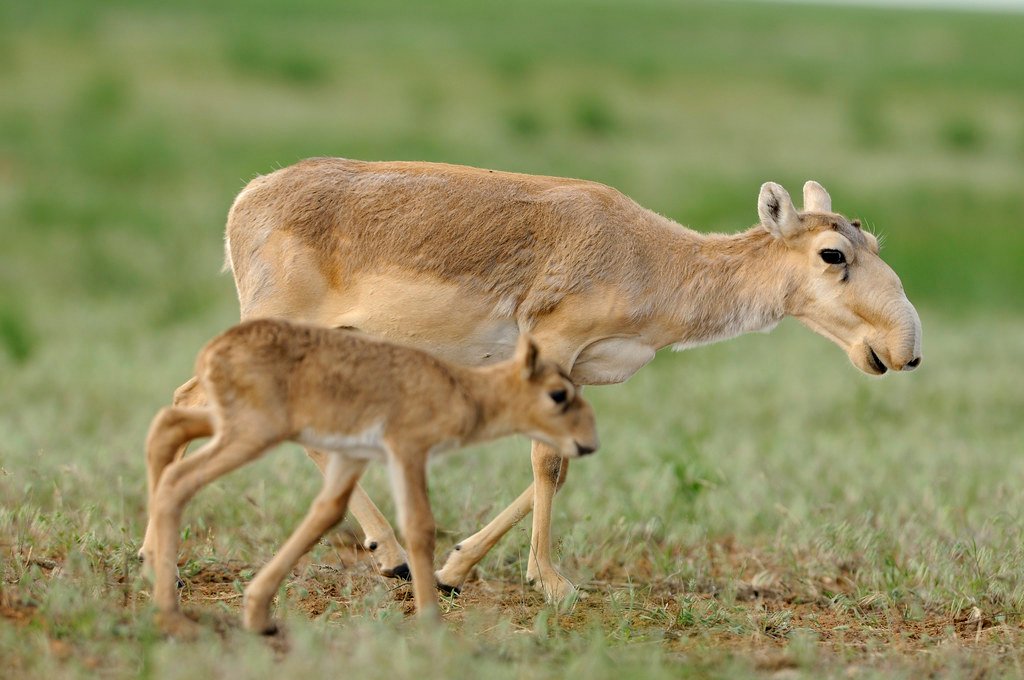DD Animal News – Once thought to be on the brink of disappearing forever, the saiga antelope—a creature with a history as ancient as mammoths and a nose as distinctive as a cartoon character’s—has made a remarkable recovery. Thanks to years of dedicated conservation efforts, this odd-nosed antelope is no longer critically endangered and is once again roaming the Kazakh steppe in the millions.
From Ice Age Icon to Endangered

Saiga antelope have walked the Earth for millennia, surviving alongside woolly rhinos and being immortalized in ancient cave art. But the last century hasn’t been kind to them. During the 1950s and ’60s, they were hunted aggressively by Soviet and Chinese poachers for their meat, hides, and especially their horns, which are valued in traditional medicine. At the height of the crisis, an estimated 150,000 saiga were killed every year.
This intense overhunting, combined with climate-driven disease outbreaks, caused their population to crash. By 2002, the saiga was officially classified as critically endangered on the International Union for Conservation of Nature’s (IUCN) Red List, with only about 21,000 individuals left in Kazakhstan—their last major stronghold.
Kazakhstan Steps Up

In a bold and necessary move, Kazakhstan banned saiga hunting in 1999 and cracked down hard on poachers and smugglers. But the real game-changer came in 2006, when the Altyn Dala Conservation Initiative was launched. The program focused on protecting the Kazakh steppe, the saiga’s primary habitat. So far, the initiative has secured an area the size of Denmark as protected land.
And they’re not done yet. Kazakhstan’s Ministry of Ecology and Natural Resources plans to expand protections to cover up to 30% of the country—an ambitious target, considering it’s the ninth-largest country in the world.
From Collapse to Comeback

Today, thanks to these efforts, saiga numbers have skyrocketed. As of 2024, there are now an estimated 2.8 million saiga antelope in Kazakhstan alone. Their IUCN status has been upgraded to near threatened—a far cry from the dire predictions made just two decades ago.
Part of their rebound is due to their high birth rates: about 60% of saiga mothers give birth to twins, which allows populations to bounce back quickly from setbacks.
But it’s not all smooth grazing from here. Disease outbreaks, often triggered by climate shifts, remain a major threat. In 2015, more than half the global saiga population died in just three weeks due to a bacterial infection worsened by unusually warm temperatures during calving season.
According to the U.S. Fish and Wildlife Service, the saiga is still listed as critically endangered in Uzbekistan. Barriers to conservation include obstructed migratory routes, which proves the importance of tailored conservation strategies.
Still Fragile, But Full of Hope
Saiga antelope may look quirky with their oversized, drooping noses, but their story is one of survival and resilience. Conservationists continue to monitor for disease and work to expand safe spaces, knowing that one warm season could undo years of progress.
For now, the saiga’s story serves as a powerful reminder that, with the right help, even the most endangered species can make a comeback.






